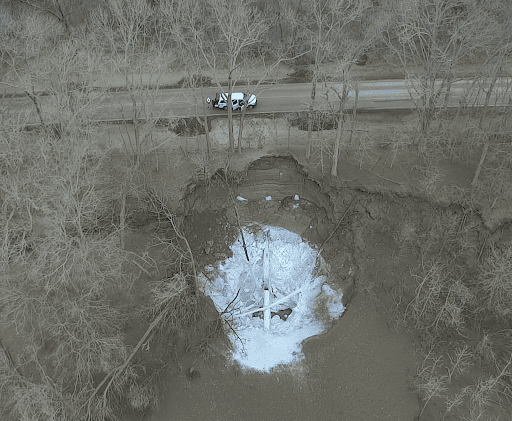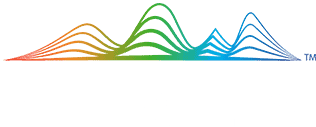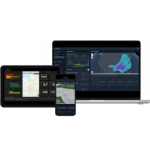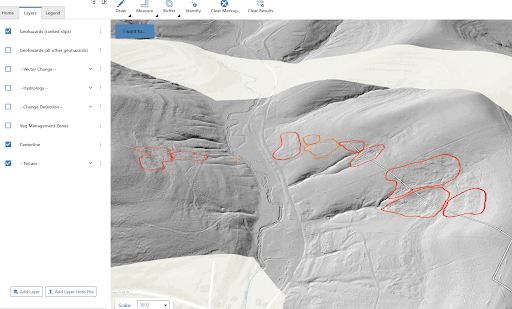At PPIM 2024, Teren was part of a collaborative presentation on “Pipeline Digital Twins and Geohazards” which detailed a groundbreaking approach to bolster the safety and resilience of critical energy infrastructure. Led by industry experts from pipelinelogic, Penspen, and Teren, the session introduced digital twins and discussed the fusion of pipeline material data, inline inspection technology, and advanced geohazard modeling techniques to conduct comprehensive geohazard threat assessments.
Traditional geohazard assessments often grapple with limited data sources resulting in inefficient risk prioritization, leaving pipeline systems vulnerable. However, when you integrate pipeline material data and high-resolution inline inspection data, you can develop a more accurate representation of a pipeline’s condition and vulnerabilities. This results in dynamic, real-time views of pipeline integrity, enabling operators to prioritize assets at highest risk.

The core areas of discussion included:
- Geohazard Modeling: Teren demonstrated the predictive capabilities of geohazard modeling in identifying potential threats like landslides, earthquakes, and erosion. This modeling, when merged with the pipeline’s digital twin, allows for simulation of various scenarios and assessment of their impact on pipeline integrity.
- Weather: Teren also presented on its revolutionary approach to integrating weather and climate data into the assessment. This real-time monitoring allows operators to pinpoint where weather is likely to compromise pipeline integrity and operations – and where it is not.
- Pipeline Material Data: pipelinelogic took the stage to emphasize the significance of comprehensive knowledge about pipeline materials, including vintage, seam type, and toughness, and how this information influences responses to geohazard-induced stresses.
- Inline Inspection Data: Our partner, Penspen then highlighted the capabilities of inline inspection technologies in capturing precise data on pipeline condition, thereby offering invaluable insights into defects and potential vulnerabilities.
The speakers then demonstrated how the integration of pipeline material and inline inspection data with geohazard modeling facilitates comprehensive geohazard threat assessments, aiding informed decision-making in maintenance prioritization, emergency response planning, and resource allocation. They demonstrated the effectiveness of the program by presenting two case studies:
Case Study #1: Transverse Migration of Pipeline
In the first case study, an Integrity Engineer was examining two consecutive ILI runs, and detected current strain levels employing specialized Finite Element Analysis (FEA) coding. Through this custom-coded FEA analysis, they were able to ascertain the rate of change in strain along the pipeline. Leveraging the power of a Digital Twin model, the engineer validated their findings, which were then confirmed through a thorough field investigation. This comprehensive approach not only identified the transverse migration but also provided crucial insights for addressing potential integrity issues within the pipeline system.
Case Study #2: Discovery of Active Earth Movement
In the second case study, an Integrity Engineer examining ILI data made a significant discovery regarding active earth movement. The ILI log highlighted a concerning anomaly labeled as a “Field Bend,” prompting the immediate mobilization of a field crew to investigate further. Despite initial visual inspections yielding no conclusive results, the engineer turned to a Digital Twin model enhanced with Teren Data for a deeper analysis. The active earth movement was successfully pinpointed and confirmed, providing critical information for implementing appropriate remedial measures to mitigate potential risks to the pipeline’s integrity.
Summary
In conclusion, the integration of pipeline digital twins and geohazard modeling marks a transformative shift in pipeline management. This innovative approach empowers operators to proactively identify and mitigate geohazard-related risks, ensuring the long-term reliability and sustainability of energy infrastructure.
The event presentation not only provided valuable insights into the latest advancements in pipeline safety but also paved the way for collaborative efforts in enhancing the resilience of energy infrastructure against geohazard threats.
To learn more about this presentation, or our approach to digital twins and geohazard modeling, visit our website.



